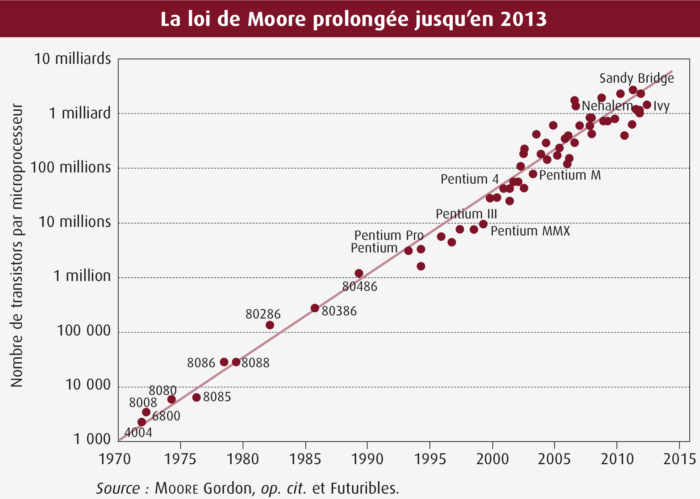Stated in 1965 by Gordon Moore, the “law” that bears his name predicts that the number of transistors available to build a silicon-based integrated circuit will double every 18 months, resulting in increased performance and decreased cost.
Since the first microprocessor was developed in 1970, both the density and the power of circuits have indeed been observed to increase in accordance with this law. But can this be expected to continue for ever? Is this truly a trend that is likely to be maintained in the long term without at some point encountering limits?
Jean-Paul Colin argues here that the advances in miniaturizing microprocessors cannot be maintained indefinitely in the same direction and at the same pace. First, for reasons relating to the physics of solids, beyond a certain level that is likely to be reached in 12 years’ time, transistors no larger than two or three atoms of silicon will no longer be able to operate using the binary logic that is the basis for the way they function at present.
Furthermore, Colin argues that progress depends on a large range of factors besides the physical properties of silicon: in five or six years, it will reach limits imposed by the architecture of the systems, the complexity of the design, the preconditions necessary for mass production, and tests of quality and security which would take longer than the solar system has existed.
The most crucial limiting factor, Jean-Paul Colin stresses, will probably arise from the enormous investments required in order to overcome or push back these limits. Thus Colin concludes that the trend cannot be maintained and that the electrical components industry is likely to undergo considerable turbulence five or six years from now.
La loi de Moore : quelles limites ?
Cet article fait partie de la revue Futuribles n° 278, sept. 2002
